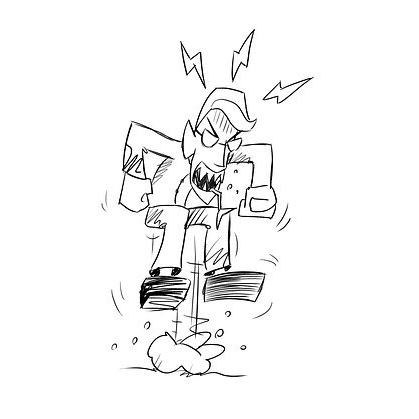In my last post I shared some thoughts on how feedback can contribute to your editing process in different ways at different stages of a project, and a bit about my method for dealing with feedback.
In this post I’d like to share some experience of my beta read process – some examples of the feedback I received and what I did to address it.
Beta Readers
I managed to recruit six beta readers, including my partner who had read it before more than once as an alpha reader. I received comments on every single chapter in the book. All six readers picked up on different things, but there were a few common points.
Three BIG Problems to Fix
Among the issues the beta readers identified were two major issues, and one minor issue which had a major root cause, which make good case study examples.
1. A minor character wasn’t working

FEEDBACK: One of my supporting characters just wasn’t working for any of the readers. They didn’t understand him, or his interactions with the other characters. They considered him to be one dimensional, irrational, overly confrontational, unbelievable.
EMOTIONAL RESPONSE: Disappointment. Deep down I already knew this was going to be an issue and I was disappointed with myself for not working on it sooner. I was able to get on with fixing this immediately.
ACTION: The good news was the character only appears in five scenes and has little impact on the story outside those scenes, so I could fix this by simply re-writing the scenes. My first step however was to go away and develop the character’s back story and profile so I had more to draw on when I came to re-write the scenes. I focussed on adding more detail and giving him a definable arc so his attitude changes during the course of the book.
2. My MC was coming across as petulant and unlikable
FEEDBACK: In several cases my MC, Elliot, loses control of his emotions and snaps or gets angry at himself. The readers largely saw this character flaw as highly unlikable and it made them struggle to connect with the MC. They saw his spiralling into depression and despair as whiny and petulant. Worse, they saw the relationship between Elliot and the other MC, Sam, as far more toxic than I had ever intended.
EMOTIONAL RESPONSE: Frustration and confusion. The readers were completely misconstruing the scenes and missing the point. I had to let this one sit for a while.
ACTION: Unlike the first issue, this one affected a lot of small interactions and scenes, but there were a few key scenes that were colouring the interactions elsewhere. I spent some time analysing WHY my intended meaning had got so lost and, considering it alongside some of the other feedback, I identified I was over showing and under telling (yes, this can be a thing).
I was so busy showing the characters actions that I gave no insight into their thought processes. This meant the scenes were very visual but could be interpreted in multiple ways. I identified the key scenes to re-write and also smaller interactions to edit, and focused on adding more internal monologue for the characters to explain their understanding of what was happening. I also chose to extend a couple of the problem scenes so they were less abrupt/jarring.
I revised some of Sam’s reactions to Elliot to make it clear that she wasn’t letting him bully her, or accepting his bad behaviour. I also revised Elliot’s behaviour to make it clearer what was triggering him and why, and to make sure his emotional pain was evident.
Where previously the characters’ actions and reactions were inferred from “shown” body language, I was now putting more of them into dialogue and thoughts. This was more a process of addition than alteration.
3. A scene raised questions I couldn’t answer and didn’t quite work

FEEDBACK: One particular set piece scene raised several questions which I couldn’t easily answer. The scene was something of an anomaly and clearly didn’t quite work for the readers within the rules of the world I’d established, although they didn’t agree on why.
EMOTIONAL RESPONSE: Complex! At first I was stumped by how to address the specific feedback, until I unpacked it and realised that the readers knew there was an issue but they didn’t really know why. However I knew why. Why was a massive plot hole I’d patched over – not very well, apparently. Then I felt distraught and hopeless. I had to let this one stew and explore to find a solution.
ACTION: Once I’d analysed this enough to work out what the underlying problem was, I knew what I had to fix. The problem was how to fix it. Back during very early drafting, I included a scene in which the Mime uses a kind of mind control on a victim, but it was problematic in that it had the potential to make the antagonist too powerful. Because of this issue, I didn’t have much opportunity to use it again and it widened into something of a plot hole.
As I’d progressed with developing the story I knew this one off demonstration of a complicated power either needed to go, or it needed to be integrated. So I tried to integrate it. I added complex explanations about why it only worked under certain circumstances and I tied it into Sam’s character arc in order to force another demonstration of this power. Even though it still only appeared in Act 1, I made sure the characters referred to it again later to keep it relevant. I even contemplated making an already strong scene more complicated in order to keep this dead idea alive.
As plot hole patches go it was damn good… but it was still a patch.
I was now presented with the task of doing what I should have done in the beginning, filling in this hole by removing the anomalous power. However, now I didn’t just have to re-write the one scene that had birthed the idea, I had to fix everything I’d changed in order to patch it!
But there was no way around it, so I did exactly that. I traced every ripple and put it back in order and then un-threw the original stone.
I hope these case study examples give an insight into the types of feedback that might come from a beta reader, and how acting on them can be complex but ultimately beneficial.
Do you have any examples of how you acted on feedback that you’d like to share? Why not write your own case study and post a link back in the comments.
